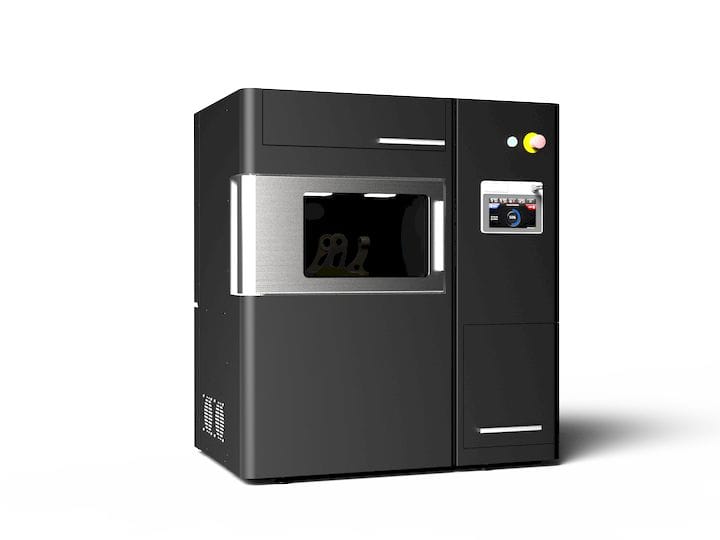![The miniFactor Ultra industrial 3D printer [Source: miniFactory]](https://fabbaloo.com/wp-content/uploads/2020/05/image-asset_img_5eb0a5bf7df45.jpg)
Finland-based miniFactory Oy Ltd announced their latest 3D printer, the miniFactory Ultra.
This would be the company’s third 3D printer. We saw their first machine way back in 2013, which was as you might expect a competent 3D printer of basic polymers, such as PLA. IN 2018, that’s all changed.
The company’s focus is now on industrial 3D printers, meaning their equipment now specializes in high-temperature materials. How high? Well, in the new miniFactory Ultra the heated build chamber’s maximum 250C would turn their 2013 machine’s PLA materials into a puddle.
![ULTEM 1010 3D print [Source: miniFactory]](https://fabbaloo.com/wp-content/uploads/2020/05/image-asset_img_5eb0a5bfcd5ee.jpg)
This has to be one of the highest build chamber temperatures we’ve seen. Most seem to top out at around 100C, so this is fantastically higher.
Working with the build chamber heat is an incredible hot end that can reach the staggering temperature of 480C.
Why are such high temperatures necessary? Olli Pihlajamäki, miniFactory’s Sales & Marketing Director, explains:
“miniFactory Ultra is fully capable to 3D print ultra-polymers with high strength without warping. It’s possible with the heated chamber up to 250 celsius. ULTEM (PEI), PPSU and other amorphous polymers require printing chamber temperatures above the polymers glass transition temperature (Tg).
Tg is one of the most important thermophysical properties of amorphous polymers. In that temperature, polymer chains are oriented randomly and have freedom to move and polymer is in structural relaxation and cools down smoothly and evenly. From there comes the strength and dimensional accuracy to our printed ultra-polymer parts.”
![Annealed high-temperature 3D prints [Source: miniFactory]](https://fabbaloo.com/wp-content/uploads/2020/05/image-asset_img_5eb0a5c026740.jpg)
This is the crux of the matter: it’s no longer sufficient to merely ensure accurate geometry of the 3D printed part, as has been the case for much of the prototyping history of desktop 3D printing. Pihlajamäki explains further how this works:
“PEEK, PEKK and other semi-crystalline polymers require a really sensitive printing process for optimal crystallization. For that the Ultra has unique integrated and automated annealing system which means that after a print job, the machine calculates and perform the optimal annealing process for semi-crystalline polymer parts. High quality servo motors in all axes takes care of the printing accuracy.”
Aside from the high-temperature and material capabilities, the miniFactory Ultra has a good set of specifications:
-
Generous build volume of 330 x 180 x 180 mm
-
Automated calibration
-
Dual, non-interfering extruders
-
Color touchscreen control panel
-
Air filtration system
And there’s also an interesting adhesion system powered by a vacuum. They say this offers an ability to rapidly change the build platform after a print. I’m interested in this feature because aside from Stratasys’ Fortus line, I’m not sure any other system employs a vacuum process to hold down the build plate.
![ULTEM 9085 3D print [Source: miniFactory]](https://fabbaloo.com/wp-content/uploads/2020/05/miniFactory-Ultem9085_result_img_5eb0a5c06f3b7.jpg)
All this makes for a somewhat large device, as you can see at the top; the miniFactory Ultra weighs a massive 160kg.
My thought about the miniFactory Ultra after thinking about the specifications is that it seems to be targeted as a Fortus-killer: it seems to 3D print similar materials, likely at lower prices due to the open materials effect.
Currently the company is seeking resellers for the machine.
Via miniFactory











MiniFactory’s new software produces a very useful report for each 3D print that may be important for clients. We had a close look at one.